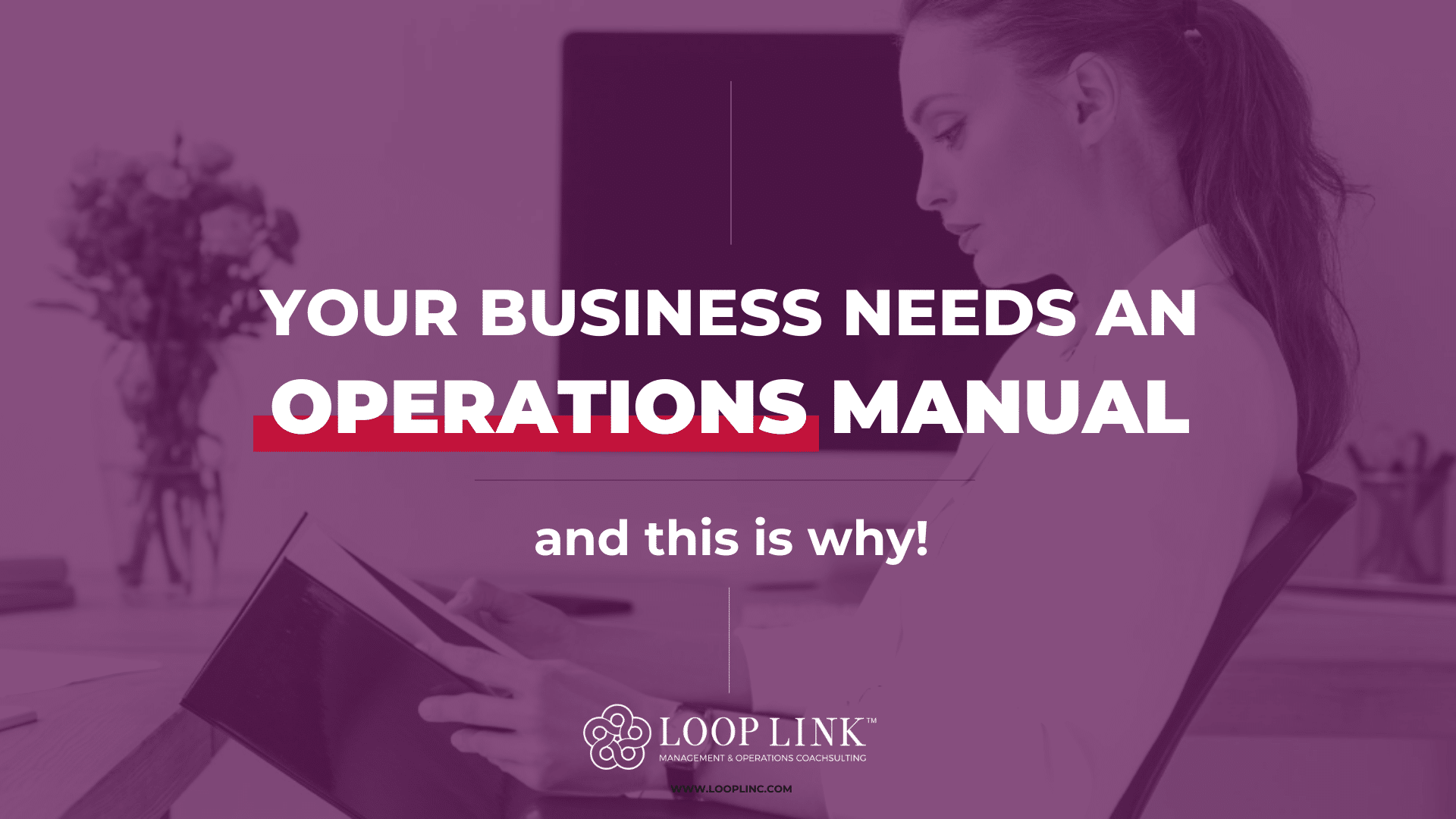Most small business owners start their businesses by keeping it light-weight and simple. Yet, many businesses struggle to stay profitable because they fail to set up a strong business operations manual. Business operations manuals establish a fundamental foundation for your business and prevent disasters or bad processes. Without one, you can be consistently weathering the “perfect storm” that comes in the form of constant firefighting, wasted time, lost clients, etc.
Most small business owners do not consider the reality of waste in their business (defects and delay in your business processes, and does not add value and ultimately benefit your clients). Experts have estimated that an average small business has at least 3% waste, and many have higher rates of waste. Waste of any size or caliber can impact your client experience and standard of excellence. By having an operations manual in place, it allows you to evaluate processes, performances, and productivity so you can optimize your operations.
What is an operations manual?

An operations manual is the core foundation of a business. It defines how the work flows and contains best practices of a company. It walks teams step-by-step on how to perform their functions and give them everything they need to do it.
Operations manuals provide your team with reliability and efficiency to carry out their tasks with consistent and predictable results.
An operations manual answers the 5 questions:
What, Why, When, Who and How, such as…
- What is the process, policy, or procedure?
- Why is it important to my business?
- When does it happen?
- Who are involved?
- How should it be completed?
Using this approach to create your business operations manual will define the level of service excellence you want to provide to your clients and collaborators; and how to respond when unexpected situations happen.
Imagine purchasing a vehicle. With it comes a manual that tells you what the model is, what kind of oil to use, tire pressure details, and more. It includes important information on how to troubleshoot through certain situations. That’s what an operations manual is for your business.
Why Your Business Needs An Operations Manual
Set a Standard of Excellence
From the beginning, you set your intentions to deliver excellent and quality products or service. However as your business grows and team members are added, quality often diminishes or suffers. Things begin to fall through the cracks, steps are overlooked or missed while being rushed, and client experience can differ from one to another.
Having a well-documented business operations manual will give you and your team control, to maintain a standard of excellence, as you continue to scale your business. Each project can be measured for success and improvement.
Easily Train Team Members
There is a common gap among most businesses surrounding strong processes for training new team members. I’ve often heard clients say that a team member didn’t work out because they had “100” questions about a project, or sometimes no questions at all. Most of my clients think “it would have been easier and faster if I did it myself.”
To reduce questions and improve communication, a comprehensive operations manual can answer almost every question your team member may have and gives confidence that things will be done in the proper manner. The operations manual includes policies, procedures, and templates that save you and your team time, and set a performance standard.
Time Freedom with Peace of Mind
You may have felt that you had little time to focus ON your business, to do the higher, strategic planning and functions. Your time may have been consumed by the day-to-day administrative tasks, firefighting or solving problems. This is a classic result of not having a business operations manual in place.
Empower your team to carry on with the day-to-day business without you there. The operations manual details instructions and decision and escalation matrices to help them minimize issues and inconsistencies; freeing you to focus on the vision and direction of your business, and maybe also take that vacation (not work-cation!).
Platform for Growth
Have you ever thought “If you want it done right, you have to do it yourself”?
Most business owners have thought this at some point in their journey. While there is some truth, I believe with the proper procedure and detailed checklist that promotes accountability, the task can be done right by one of your team members.
If you, as the owner, continue to do everything, your business is not scalable over time. By creating systems, and documenting workflows to run without you, your business will be scalable and grow in a sustainable way. When your well-documented systems are successful, it will be a point of reference to replicate on a larger scale or at other locations.
Built with Value
Many business owners begin their business without the thought or vision to sell it. In his book “Built to Sell”, John Warrillow states that 99% of businesses are not sellable because they are too dependent on the owner.
This means that the business cannot run without you there and that it’s truly not a transferable system. Like Michael E. Gerber says in E-Myth Revisited, “Systems run the business, people run the systems.” If you approach growing your business without you as the system, you will run your business differently. With the existence of your business operations manual, it will be attractive to potential buyers.
What makes a business valuable and sellable is designing it with well-documented systems that can be run by anyone successfully. The less your business is dependent on you, the higher your business value will be.
How to Start Building an Operations Manual
The centralized core foundation of your business is a robust operations manual. Your Operations manual need to include, not only, processes and procedures, but also best practices, or policies. They provide guidance on how to approach certain situations, such as a refund policy, or office hours.
An Operations manual isn’t something that is created overnight, and it may not be something that you’re passionate to start. The key is to start small, and the best place to start with is a checklist and determining the systems that are present.
Your Move
One of the things I enjoy most is helping CEOs translate all their knowledge of their business and documenting their systems. Depending on the complexity, uniqueness, and the stage of your business, focusing on creating an Operations Manual can be something you can do on your own, or find an expert to guide you through the process.
I’ve created an easy-to-use download to help you start creating your Operations Manual and if you need someone to do it for you, let’s explore how we can work together!
The easiest step to start this process is deciding where you are in business and where your time can best be spent.








